Sustainable endurance nutrition
Cutting out packaging, artificial sweeteners and other bullshit from my endurance nutrition while saving money
Posted on 27.07.2021 - last edited on 26.10.2021
I finally set out to find a fueling solution for my bike adventures that aligns with my environmental, health and economic sustainability ideals. After adjusting the amount of calories and the macro nutrients, the solutions of this blog post should work for endurance activities, other than cycling, too.
Fueling on the bike
For the past few years I have continuously increased the amount of time I spend on the bike. This time could be spent on a commute through the city, a long weekend ride or even multi-day bike-packing trips through multiple countries.
As soon as regular rides became longer than an hour, I realized that the body works much better and training progress is improved significantly if some effort is put into fueling the body correctly.
Consuming enough fluids is easy enough, since it is the same as for sub one hour ride, with the addition of some electrolytes after some point. How much electrolytes are needed depends on the amount of sweat and its salt saturation.
Calorie intake on the other hand is a more complex topic. During sub one hour activities calorie intake is usually not necessary, as long as the workout is followed by a proper meal. However, if the effort is longer than that, calorie consumption should start in the first hour already! The body is only able to process sugars and restore the glycogen stores at a certain pace. If the exertion is continued past the point of empty glycogen stores, we speak of bonking, which can result in negative training effects.
Off-the-shelf products
Now one might ask “what is the problem with the millions of bottle-mixes and energy-bars out there?” Well, here are some points on what is bugging me with these products. Maybe I simply have not found the brand that aligns with my values yet, but now that I have looked into topic, it does not matter anyways. 😀
Most of these points are not that big of an issue for the occasional longer ride. Also for bike trips where it is not possible to pack a week worth of nutrition, exceptions can be necessary. I would then suggest to at least pack some electrolyte powder and do some research on where to refill on energy-bars like these ones, which contain simple ingredients.
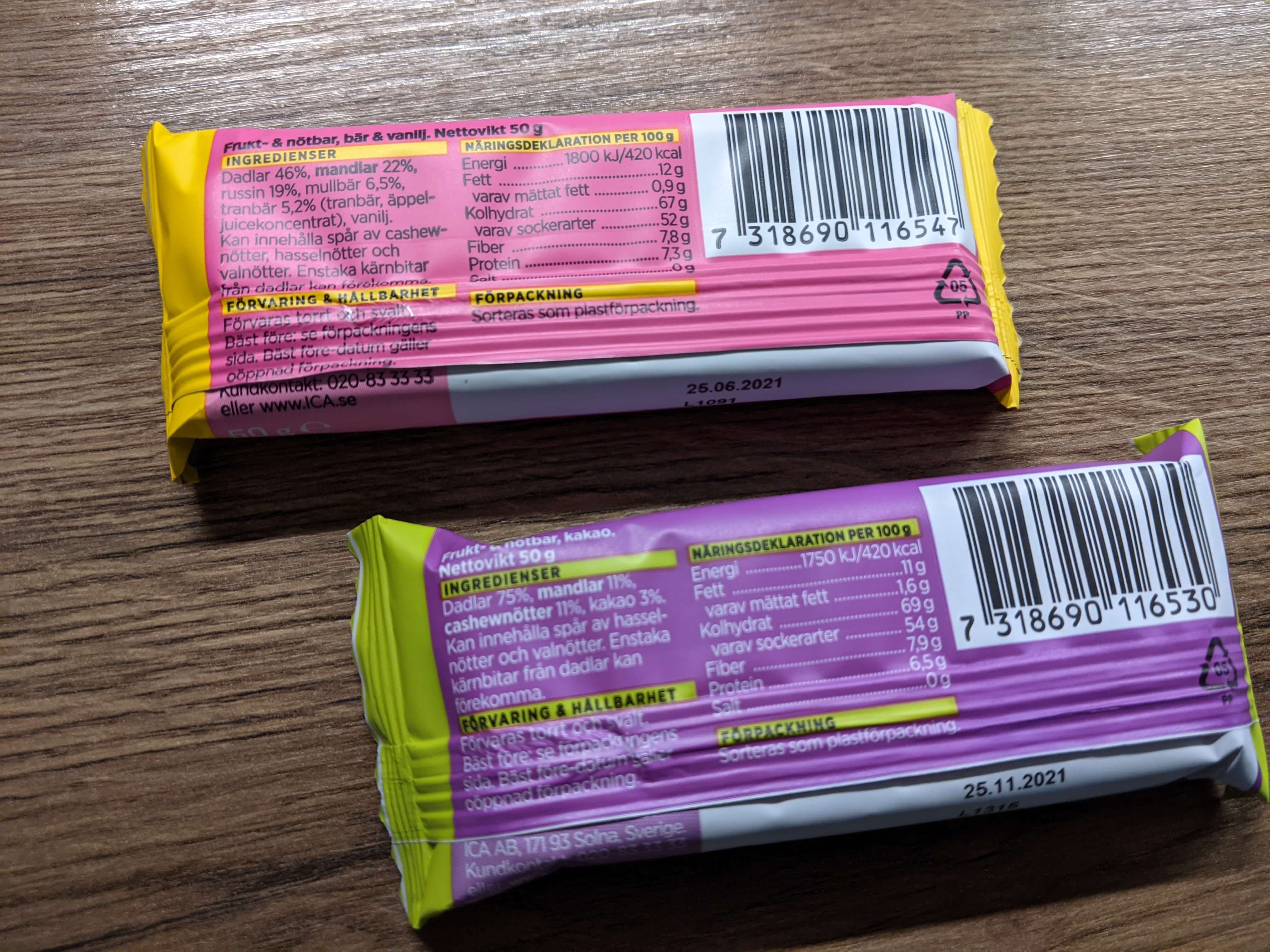
Packaging
Usually sports nutrition is sold in small portions and packaged in plastic. Even if the plastic type is recyclable and is actually recycled in the regional waste management system, the packaging itself remains single use.
Artificial sweeteners
Even though different sugars are the main ingredient of bottle-mixtures and gels, many of them contain artificial sweeteners on top of that. Especially hydration tablets like Resorb, which is quite popular in Sweden, usually contain them.
As a proponent of whole food plant based diets, artificial sweeteners are a no-go for regular consumption. Fooling the body into thinking it got sugar, which it did not, is about the last thing I want to do. Also while the environmental impact of artificial sweeteners remains unclear, I think we should be more careful with them. Especially because I see absolutely no need for them…
Cost
Mixing bottle-mixes and baking some energy-bars is no witch craft and can be done much cheaper at home with very little preparation time. With daily or even weekly consumption the difference is quite substantial.
Home made bottle-mixes
I follow a mostly whole food plant based diet and try to stick to it as much as possible. Last year I wrote a blog post on what that means to me. Also during bike rides I choose to fuel myself with home made whole food energy-bars as long as possible. However, in extreme situations such as all day bike rides, it is difficult to consume all the necessary carbohydrates in a whole foods form. There are only so many energy-bars that will fit into the jersey pockets and there is a limit to how many of them are fun to eat as well.
When doing intense multi-hour efforts, the body simply consumes a lot of sugar so I fill my bottles with some extra sugar and also add some electrolyte powder.
In creating my own bottle mixture, I am able to tweak the amount of sugar to my exact need and am able to save a lot of packaging and cost.
Ingredients
I source the main ingredients for these mixes from bulk.com. Their packaging for the maltodextrin, dextrose and electrolyte powder, I buy from them, is home-compostable. These ingredients works well for me but your stomach might react differently. So I’d recommend to try out different mixtures before going on all day adventures or ordering multiple kilograms worth of ingredients.
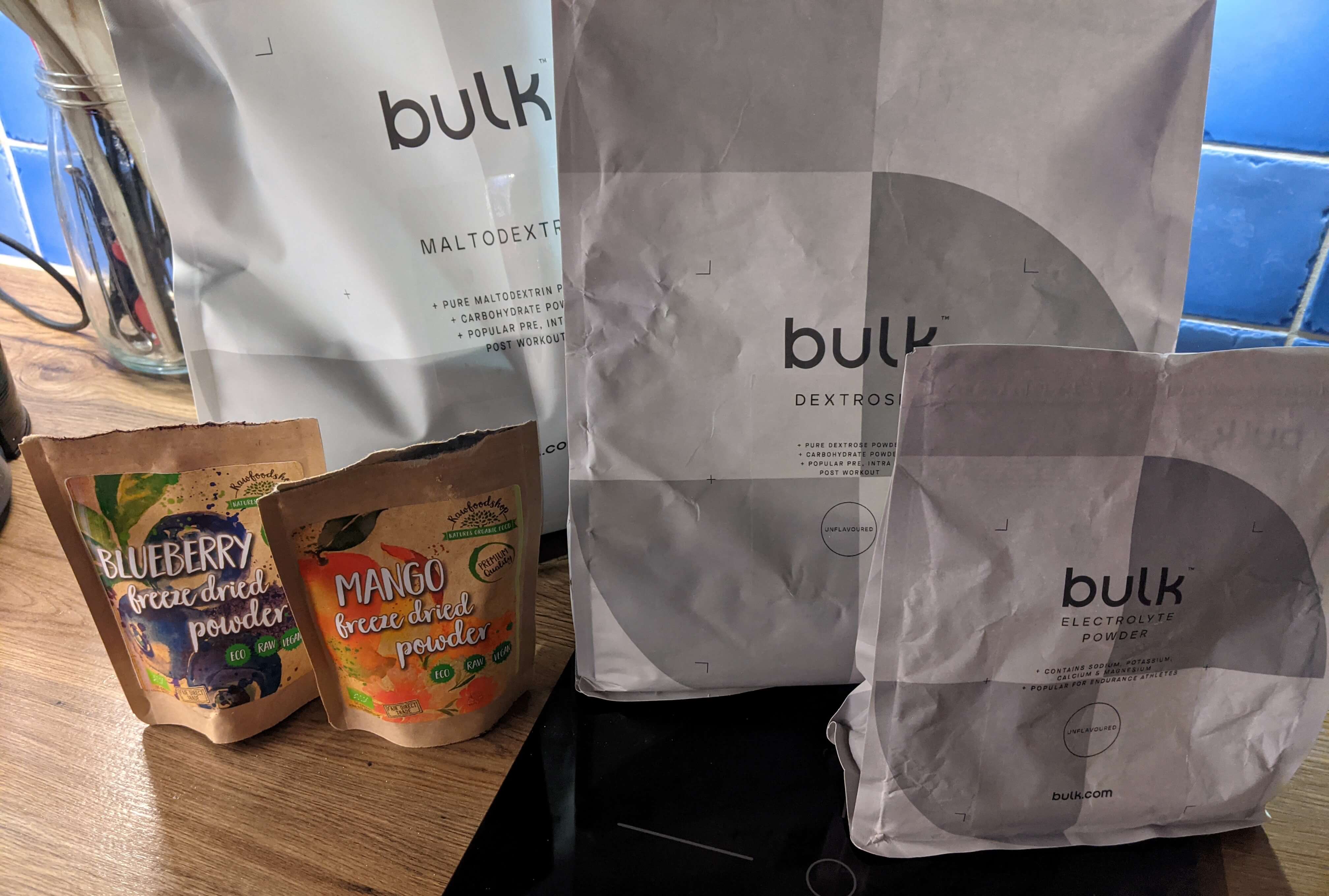
Additionally, I experimented with freeze-dried fruit powders in the bottles. Three grams of wild-blueberry-powder or five grams of mango-powder turned out to be a good amount for a 600ml bottle with 40 grams of sugar. But I don’t find the taste of just the sugar and electrolytes too off-putting either and probably won’t keep adding them. Be aware that not all freeze-dried fruit powders mix well with water. For instance, I bought Mangosteen powder, which does not mix well in the bottles.
Home made energy-bars
I wanted these to be “healthy”, easy to prepare, easy to carry in the jersey pockets and easy to eat while riding. While some of these properties depend on the packaging, the recipe really could not be any simpler.
“Recipe”
I eyeball these, so just take these mixtures as examples. (There is a bonus example further down) These bars are really difficult to fuck up, as long as the water is added little by little. For real recipes check out GCN’s video on how to prepare some classic rice cakes and date balls. (Not so whole food recipes though)
The mixture in the pictures ended up containing:
- 150g Oats
- 182g Bananas
- 58g Peanut butter
- 21g Maple syrup
- 65g Dates
- 1ml Vanilla powder
- 3ml Cinnamon
- 60ml Water
Other dried fruits, seeds, cocoa powder, other nut butters, … can be added.
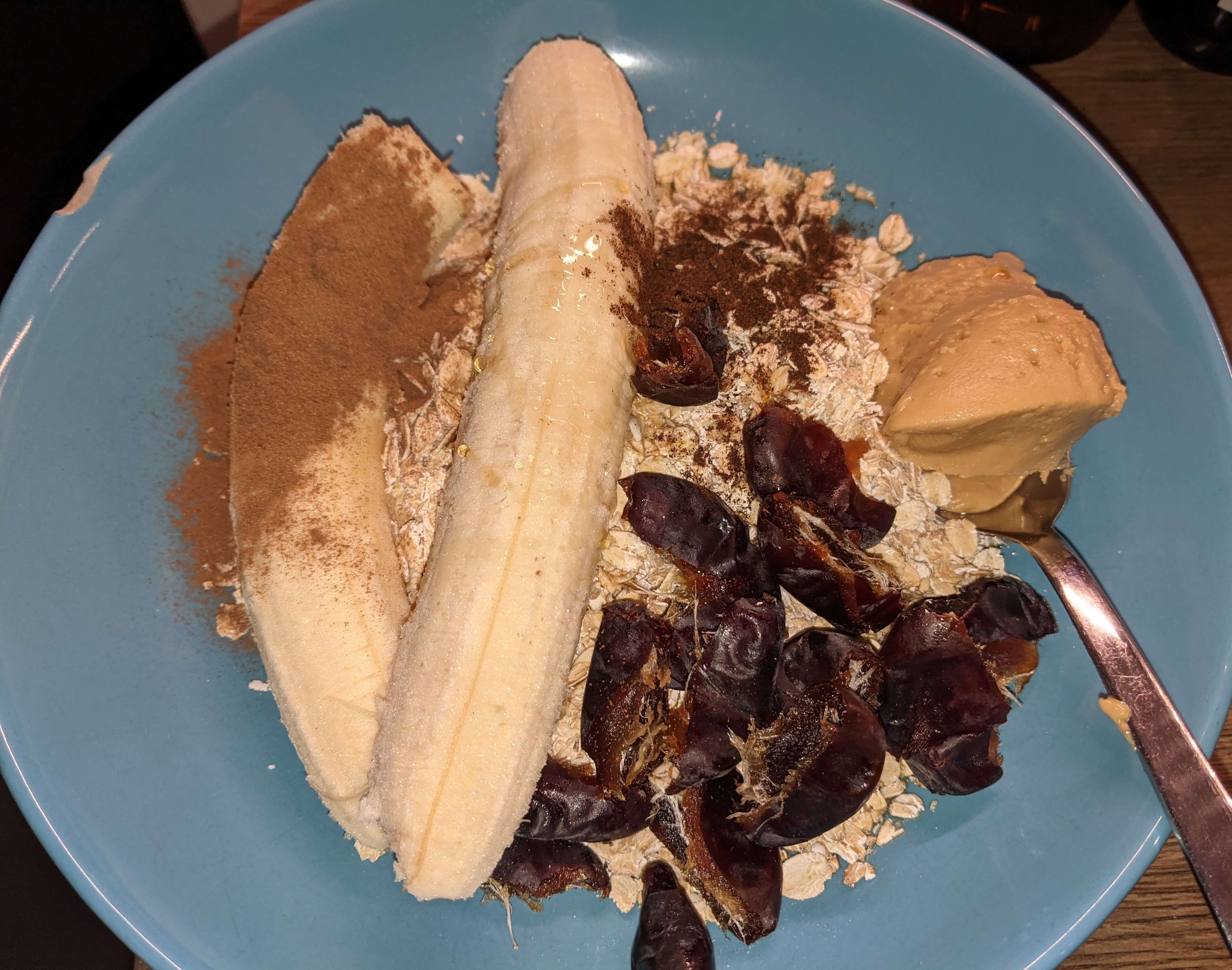
I just smash all the ingredients with a fork and blend them together, adding water as I go, so that they sticks together nicely. I usually don’t mix them up too well which will result in different bites having slightly different tastes, which is much appreciated after eating the 6th bar of the ride. However, it’s also an option to simply prepare two different kinds of bars or sprinkle some extra ingredient on top of half of the mixture. 🤷
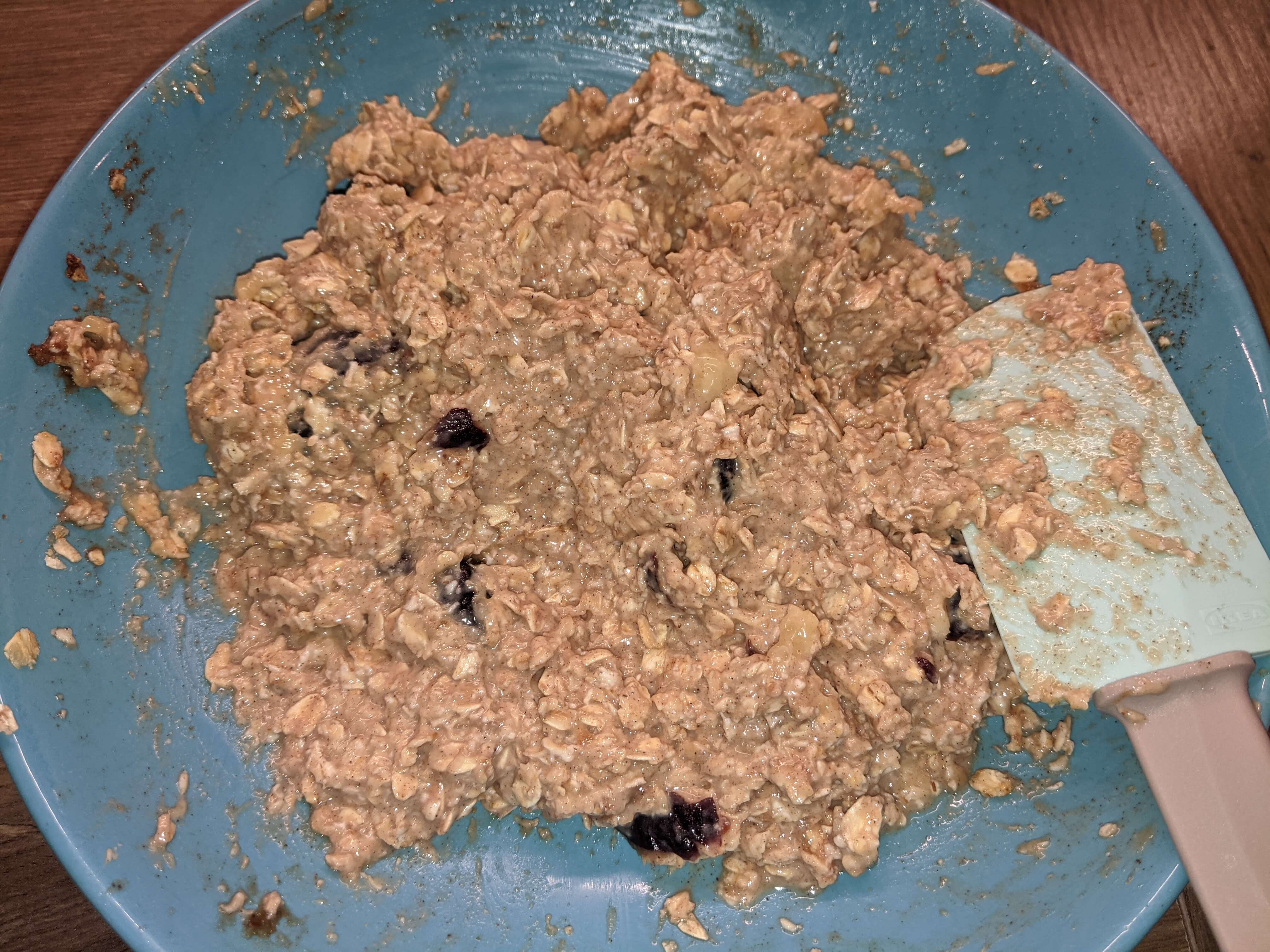
Then I just spread the mixture in an oven dish in the rough shape that the bars shall have in the end.
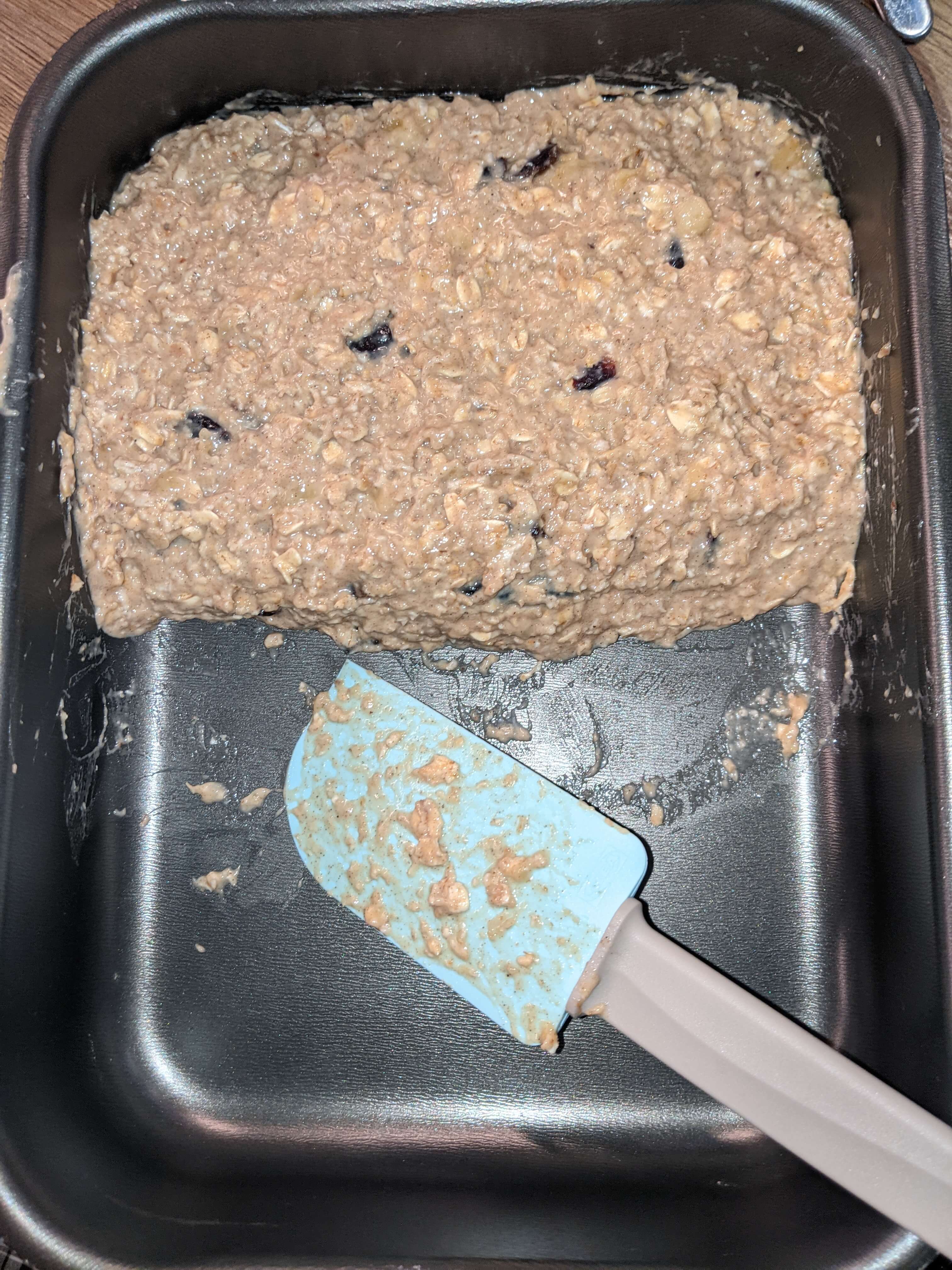
I set the oven to 180 °C and put the dish in for 30 minutes without pre-heating. My oven is pretty crappy, so maybe start with 20 minutes and give them a bit longer if needed?
How long they should stay in the oven will depend a lot on how juicy the bars shall be. Sometimes I even flip the block over and give it some more time from the other side for an even dryer end result.
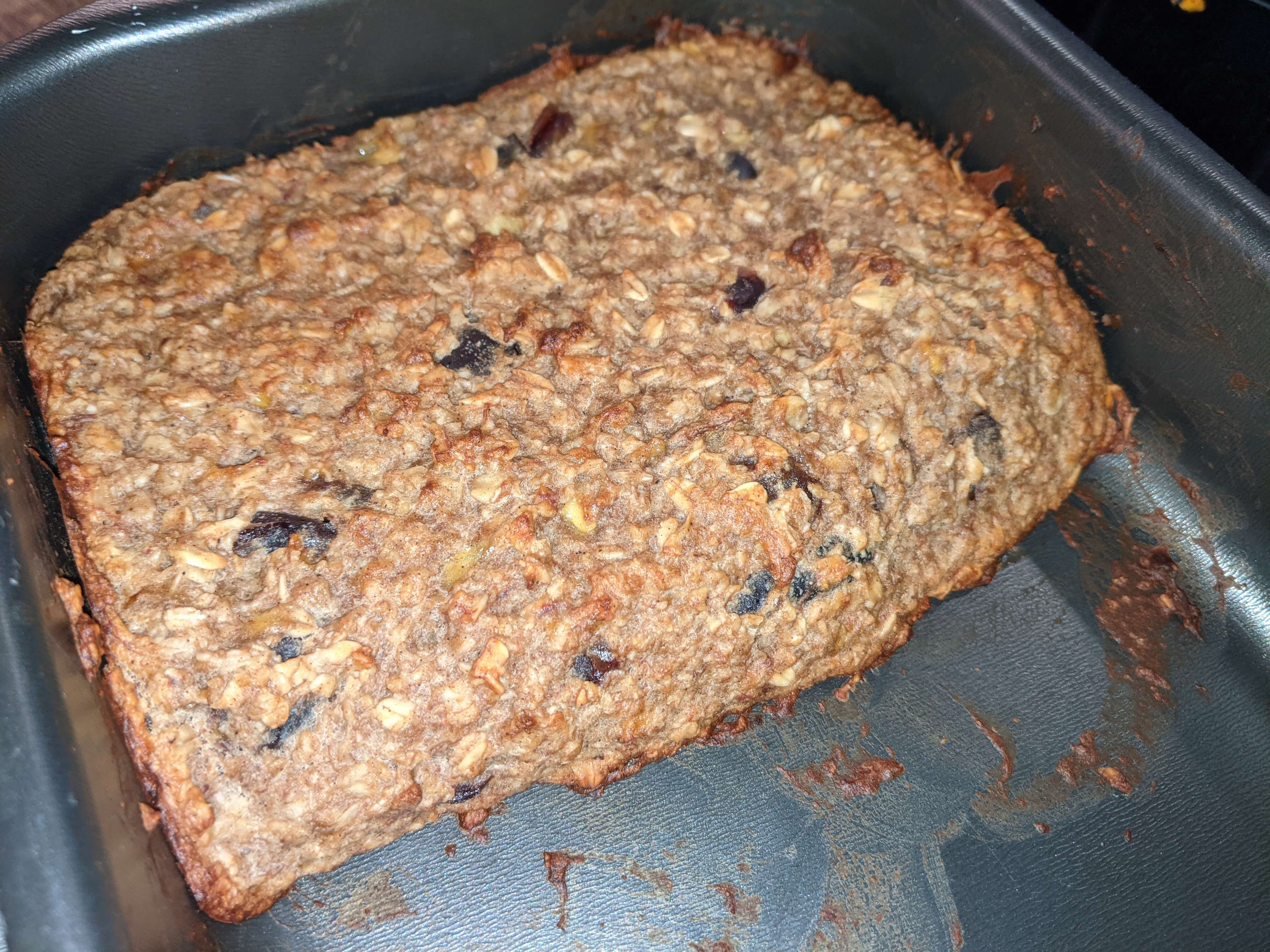
Afterwards I let the block cool a bit, cut it into bars, package the bars and put them into the fridge to be consumed over the next two days. I have not tried freezing them yet but the packaging I use can actually be frozen, so that could be worth a try.
Here is a bonus example of a mixture, which turned out to be 1.2kg of energy-bars and was my main source of calories during a 360km ride (15 hours).
- 236g Oats
- 549g Bananas
- 53g Peanut butter
- 74g Almond butter
- 114g Dates
- 31g Hemp seeds
- 2ml Vanilla powder
- 2ml Cinnamon
- 234g Water
Packaging
This is the part I am not 100% happy with yet. I tried to find some reusable water and air tight packaging and ended up with these IKEA ISTAD bags.
Especially for the sake of having a solution that I can share with others, I tried to find a solution that is widely available. While you might think of IKEA what you want, it’s very likely that the audience of this blog post has one not too far away.
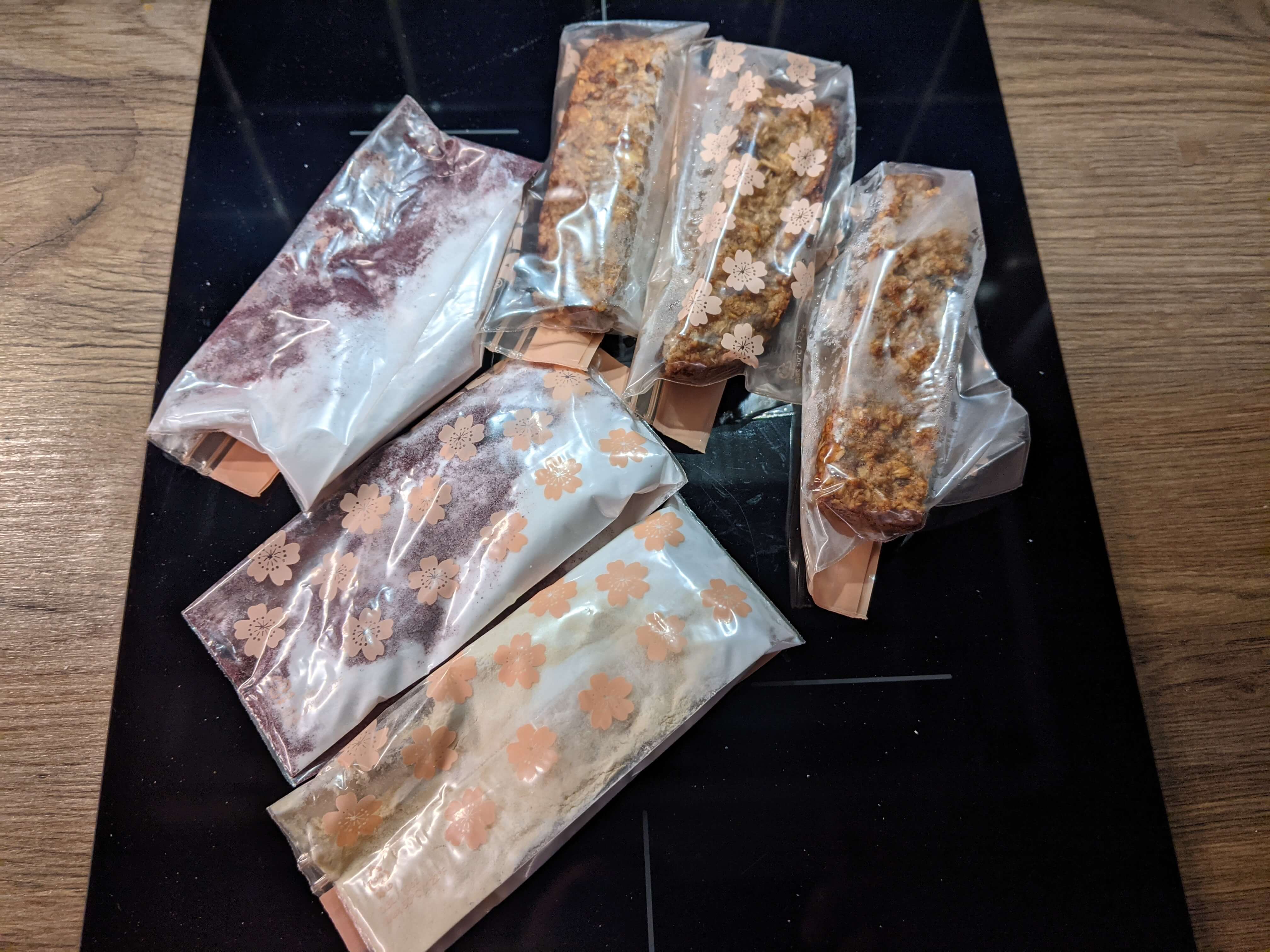
They come in a variety of sizes, provide a good seal and are sturdy enough to survive in the jersey pockets. For bottle-mixtures and energy-bars the 0.4l size works great. They are made from low-density polyethylene which usually can be recycled if they break.


(I am really not the best bike handler so the fact that I can eat these so easily on the bike means that probably you can too. 😉)
Unfortunately the bags are annoying to clean, because they are so fragile. Even with so much care, I estimate that about 10% of the bags showed some damage when I filled them for the second time. All of the bags’ zippers did not work as well after the first cleaning.
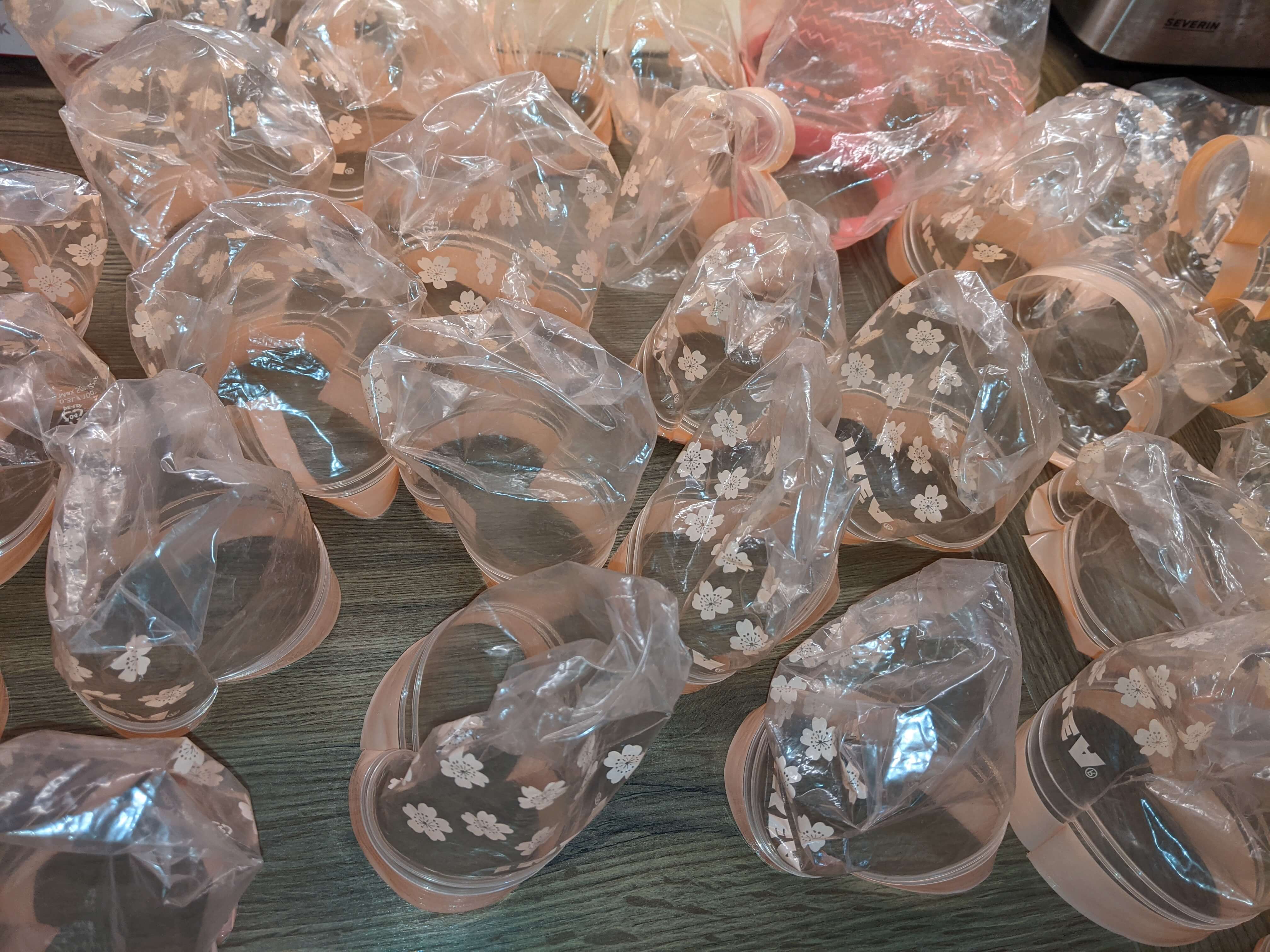
I will update the blog post once I found a better solution for packaging. Could a bio-degradable single use solution (like bio-degradable parchment paper) be more eco-friendly?
I also wonder how the added packaging, that is produced for me to buy the base ingredients for the bars in the store, compares to the added single use packaging of bars that are produced in a factory.
To be continued…